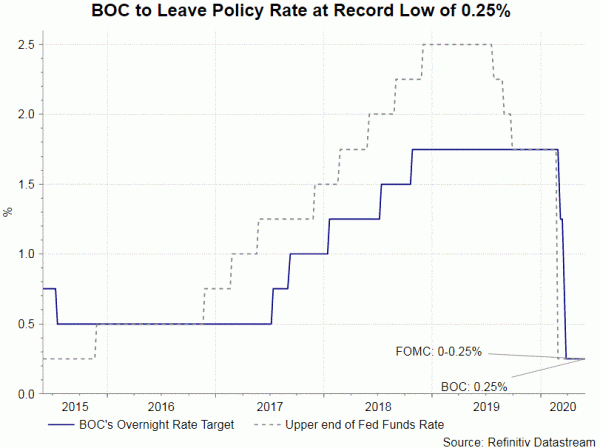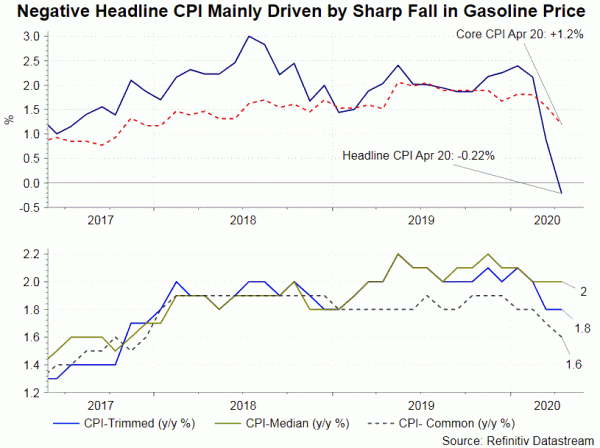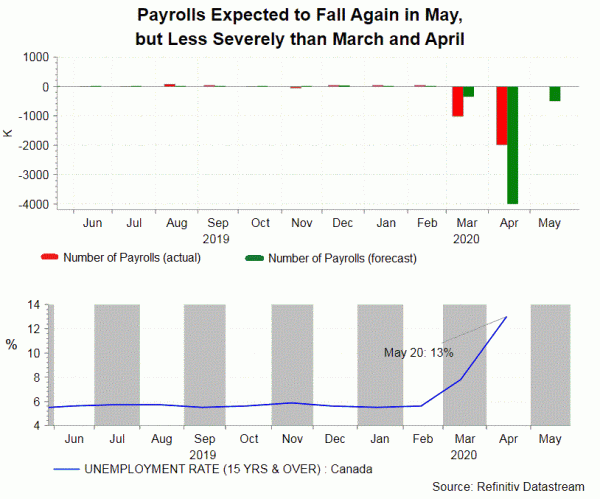The upcoming BOC meeting (June 3) will be the first one headed by incoming Governor Tiff Macklem. We expect him to leave the policy rate unchanged at 0.25%. The unconventional monetary policy, i.e.: QE, will also remain the same. Given the disappointing GDP and inflation data, the accompanying statement will maintain a cautious tone, with the pledge to extend the stimulus if needed to return inflation to the range of 1-3%.
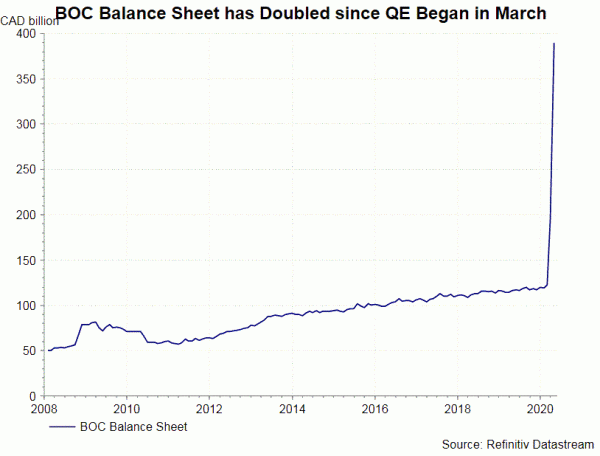 GDP in March contracted -7.2% m/m, compared with a +0.1% increase a month ago. Despite the sharp fall, the reading came in better than Statistics Canada’s projection of -9%. Weakness was widespread in different industries. Specifically, output in both accommodation and food services, and arts, entertainment & recreation dived -40%. Statistics Canada anticipated that the contraction would intensify in April, estimating GDP to fall -11% in the month. For 1Q20, GDP declined an annualized -8.2% q/q, thanks to a record slump (by -9%) in consumer spending. As the coronavirus pandemic stabilizes, many countries, including Canada, have started to relax previously imposed restrictive measures. It appears that the worst is behind us. It is possible that we will get a positive GDP figure in May.
GDP in March contracted -7.2% m/m, compared with a +0.1% increase a month ago. Despite the sharp fall, the reading came in better than Statistics Canada’s projection of -9%. Weakness was widespread in different industries. Specifically, output in both accommodation and food services, and arts, entertainment & recreation dived -40%. Statistics Canada anticipated that the contraction would intensify in April, estimating GDP to fall -11% in the month. For 1Q20, GDP declined an annualized -8.2% q/q, thanks to a record slump (by -9%) in consumer spending. As the coronavirus pandemic stabilizes, many countries, including Canada, have started to relax previously imposed restrictive measures. It appears that the worst is behind us. It is possible that we will get a positive GDP figure in May.
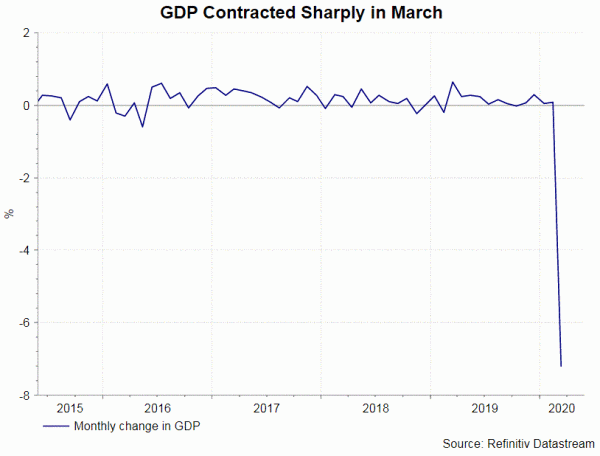 Headline CPI dived to -0.2% y/y in April, from +0.9% in the prior month. It is the first negative reading since 2009. A sharp fell in gasoline price was the major driver of deflation. Excluding energy and food prices, core CPI decelerated to +1.2%, from +1.6% in March. BOC’s inflation gauges averaged at +1.8%, largely unchanged from the prior month. Although we expect the worst is probably over, the path to recovery is gradual. Slow improvement of demand suggests that inflation could stay below BOC’s +2% target (midpoint) through 2021.
Headline CPI dived to -0.2% y/y in April, from +0.9% in the prior month. It is the first negative reading since 2009. A sharp fell in gasoline price was the major driver of deflation. Excluding energy and food prices, core CPI decelerated to +1.2%, from +1.6% in March. BOC’s inflation gauges averaged at +1.8%, largely unchanged from the prior month. Although we expect the worst is probably over, the path to recovery is gradual. Slow improvement of demand suggests that inflation could stay below BOC’s +2% target (midpoint) through 2021.
Against the backdrop, BOC will maintain its expansionary policy stance unchanged. The policy rate will stay at a record low of 0.25%. Besides rate cuts, BOC also joined the QE camp in March. It pledged to purchase a minimum of CAD5B per week in government securities and short-term debt issued by companies, as well as Canada Mortgage Bonds of up to CAD 500M per week. At the April meeting, the central bank launched a Provincial Bond Purchase Program of up to CAD50B. It will purchase CAD-denominated bonds issued by all provinces and fully-guaranteed provincial agencies with remaining terms-to-maturity up to 10 years. Furthermore, under a new Corporate Bond Purchase Program, BOC will acquire up to CAD10B of senior secured and unsecured bonds originated by Canadian companies with a remaining maturity of up to 5 years and a minimum credit rating of BBB or equivalent. Both programs started May and will last for up to 12 months.
Speaking before Senate’s finance committee, outgoing Governor Stephen Poloz noted that, “to bring inflation back to the target, it is necessary to stabilize the economy and then return economic output and employment to their potential”. He added that “if further monetary stimulus is required to meet our inflation targets, the bank has tools available to deliver that stimulus”. We expect Macklem will reiterate this stance at the June meeting.
Besides BOC meeting, the May employment report will be due on June 5. The unemployment rate is expected to have increased further to 15%, from 13% in April. The number of payrolls might have contracted -500K compared with almost -2M decline in April. Separately, the trade report will probably show widening of trade deficit to CAD 2.3B in April, from CAD 1.4B in the prior month.




